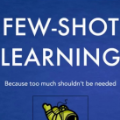Many meta-learning methods are proposed for few-shot detection. However, previous most methods have two main problems, poor detection APs, and strong bias because of imbalance and insufficient datasets. Previous works mainly alleviate these issues by additional datasets, multi-relation attention mechanisms and sub-modules. However, they require more cost. In this work, for meta-learning, we find that the main challenges focus on related or irrelevant semantic features between categories. Therefore, based on semantic features, we propose a Top-C classification loss (i.e., TCL-C) for classification task and a category-based grouping mechanism for category-based meta-features obtained by the meta-model. The TCL-C exploits the true-label prediction and the most likely C-1 false classification predictions to improve detection performance on few-shot classes. According to similar appearance (i.e., visual appearance, shape, and limbs etc.) and environment in which objects often appear, the category-based grouping mechanism splits categories into disjoint groups to make similar semantic features more compact between categories within a group and obtain more significant difference between groups, alleviating the strong bias problem and further improving detection APs. The whole training consists of the base model and the fine-tuning phases. According to grouping mechanism, we group the meta-features vectors obtained by meta-model, so that the distribution difference between groups is obvious, and the one within each group is less. Extensive experiments on Pascal VOC dataset demonstrate that ours which combines the TCL-C with category-based grouping significantly outperforms previous state-of-the-art methods for few-shot detection. Compared with previous competitive baseline, ours improves detection APs by almost 4% for few-shot detection.
翻译:许多元学习方法被建议用于少量检测。然而,以往大多数方法都存在两个主要问题,即检测不良的AP-C, 以及不平衡和数据集不足导致的强烈偏差。先前的工作主要通过额外的数据集、多关系关注机制和子模块来缓解这些问题。然而,它们需要更高的成本。在这项工作中,对于元学习而言,我们发现主要的挑战集中在不同类别之间的相关或不相关的语义特征上。因此,根据语义特征,我们建议对分类任务采用高C分类损失(即TCL-C)和基于分类的分类组合机制,对于由元模型获得的基于分类的元模型获得的基于分类的元能力。 TCLL-C利用真实标签预测和最有可能是C1的虚假分类预测来提高微小类的检测性能。根据类似的外观(即视觉外观、形状和肢体等)和环境,基于分类的分类机制将分类分为不相连接的类别,以便对基于分类的基于分类的基于分类的基于分类的基于分类的基于分类的基于分类的基于分类的基于分类的、基于分类的基于分类的基于分类的基于分类的基于分类的基于分类的分类的基于分类的和基于分类的分类的基于分类的分类的分类的基于分类的基于分类的基于分类的分类的分类的分类的分类的分类的分类的分类的基于不同结构的分类的分类的分类的分类的分类的基于的分类的计算的计算的分类的分类的分类的分类的分类的基于的分类的分类的分类的分类的分类的分类的分类的分类的计算方法,对于一个小分校算的分类的分类的分类的分类的分类的分类的分类的分类的分类的分类的分类的分类的分类的分类的分类的分类的分类的分类的分类的分类的分类的分类的分类的分类的分类的分类的分类的分类的分类的分类的分类的分类的分类的分类的分类的分类的分类的分类的分类的分类的分类的分类的分类的分类的分类的计算,对于一个小于一个不同的的计算,对于一个组的计算,对于一个组的计算,对于一个组的计算,对于一个组的计算和较小分级的计算,对于一个集团的比较的计算的计算的比较的计算的变的变的计算的计算的计算的计算的计算的





